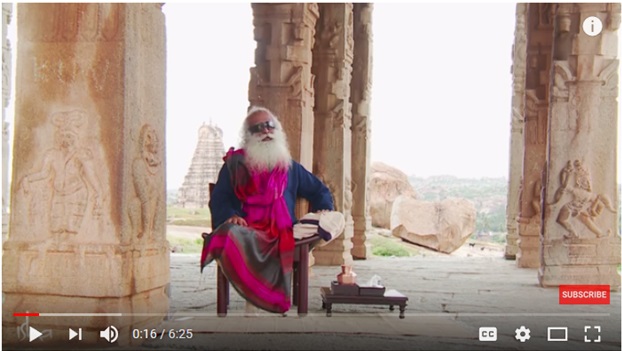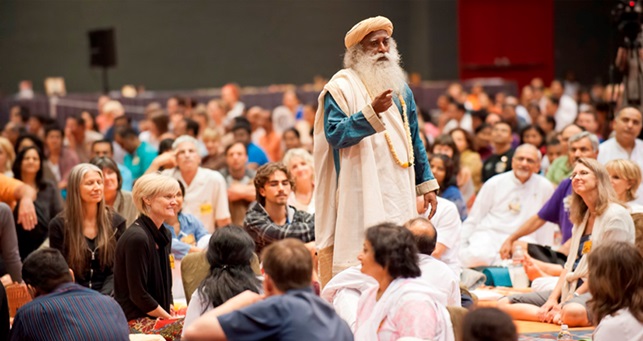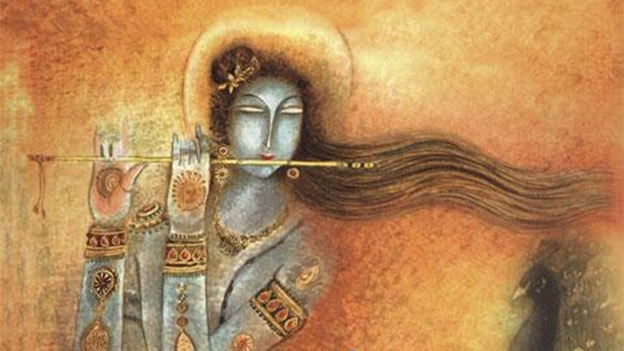
Archives
Contribute
| Pradakshina: Why Do We Go Clockwise Around Temples |
Press Release
04/19/2018
Pradakshina: Why Do We Go Clockwise Around Temples Sadhguru explains the science behind pradakshina, the practice of going around sacred spaces clockwise. This is why if there is an energetic place in the northern hemisphere, and you want to derive benefit from or absorb the energy, you must go clockwise around it. If you want to benefit more, your hair should be wet. If you want to benefit even more, your clothes should also be wet. If you want to benefit still more, you must go around naked. But wet clothes are probably better than nakedness because the body dries up very soon. Clothes remain wet for a long time. So wet clothes are the best way to go around any energy space because you will receive it best – you are most receptive that way. Sacred pushkarani or tank designed during the Vijayanagar time located on the eastern side of Krishna temple in Hampi, India. This is why every temple had a water body what was generally called a kalyani. In Tamil Nadu, it is called a kulam. You are supposed to take a dip and go through the temple with wet clothes so that you receive the energies of the consecrated space in the best possible way. But today, most of the kulams have either gone dry or mostly gone filthy. A Vortex of Energies When you go clockwise, you are moving with certain natural forces. Any consecrated space functions like a vortex which means that it reverberates, and it also draws. Both ways, an intermingling of what we are referring to as the divine and what we are calling as the self, happens. The idea in this culture is that we don’t want to meet God, we don’t want to go to heaven and sit on his lap. Here, we want to become God – we are very ambitious people. We are not looking at seeing the divine. We want to realize and become divine. The idea of being in a consecrated space is to constantly allow this transaction to happen, so that gradually, the living body itself becomes like a divine entity. If you want, you can keep this body like a beast. Or you can make it like a sacred form or divinity. Going clockwise around a consecrated space is a simple way of receiving this possibility. Particularly from the equator up to thirty-three degrees latitude, this is very intense. That is why we set up most temples within this region because this is where you get maximum benefit. You can clearly see that as you go up north, temples were set up mainly for devotion. In the south, the devotion aspect is there but the most important thing is they are scientifically constructed in a certain way – magnificent structures which took lifetimes to create. A Different Kind of Humanity Many temples took many generations of people to build. For example, the Kailash temple at Ellora, which was built by the Rashtrakutas took 135 years of work. That means four generations of people worked to the same plan, not changing a bit. That takes a different kind of humanity. Today, the whole of humanity has become such that, anything you give them, they want to do one silly innovation. It does not matter how silly it is, they want to leave their footprint on everything. Such magnificent temples were built, but no one left a name or initial anywhere to say, “I did it.†They simply worked and died without completing it. The next generation took it on, worked and died without completing it. The next generation came along, they worked and they died. They knew that someone is going to complete it. Kailash temple at Ellora This is a different kind of humanity. We want to produce those kind of people because those are the people who will do things which are truly worthwhile for humanity. We want to produce that kind of humanity who are god-like. When I say god-like, this is such a magnificent creation, but did the Creator leave His signature somewhere? No. He stands back to such an extent that we can sit here and debate whether there is a Creator or not. Love & Grace, Inner Engineering Completion with Sadhguru Sold Out in Los Angeles and Philadelphia [Link] Scientists in conversation with a Mystic Sadhguru on Monday, 2018 May 14th, 4:30-6:30 pm Sanders Theatre, Harvard University, Cambridge CAMBRIDGE, MA—A group of scientists from Harvard Medical School and Massachusetts General Hospital and Weill Cornell Medical College will have a conversation with Indian mystic Sadhguru Jaggi Vasudev on May 14 at Sanders Theater at Harvard University in Cambridge, MA. The scientists who will join Sadhguru are: Emery N. Brown, MD, PhD, Warren M. Zapol Professor of Anesthesia at Harvard Medical School and at Massachusetts General Hospital, Edward Hood Taplin Professor of Medical Engineering and Professor of Computational Neuroscience at MIT; and Nicholas D. Schiff, MD, PhD, The Jerold B. Katz Professor of Neurology and Neurosciences, Weill Cornell Medical College,New York. Sadhguru Jaggi Vasudev, a Yogi Mystic and visionary, is founder of Isha Foundation, a non-profit organization which offers yoga programs around the world and is involved in social outreach, education and environmental initiatives. The session will be moderated by Bala Subramaniam MD, MPH. Associate Professor of Anesthesia, Harvard Medical School, and Director, Center for Anesthesia Research Excellence, Beth Israel Deaconess Medical Center. Date: Monday, May 14, 2018 | Time: 4:30-6:30 pm Venue: Sanders Theatre, Harvard University, Cambridge, MA Harvard Box Office | www.boxoffice.harvard.edu | Ph: 617-496-2222 | Tickets YouTube Video Series Play List Everyone has their own favorite among the many Krishna stories. Here are a few of the more popular ones mixed in with some of the lesser known stories, told by Sadhguru. Link to Article. Sadhguru on FB | Sadhguru on Twitter | Sadhguru on YouTube | Sadhguru on LinkedIn | Sadhguru Blog | Sadhguru on Mobile Apps | Sadhguru on Instagram | Sadhguru on Pinterest 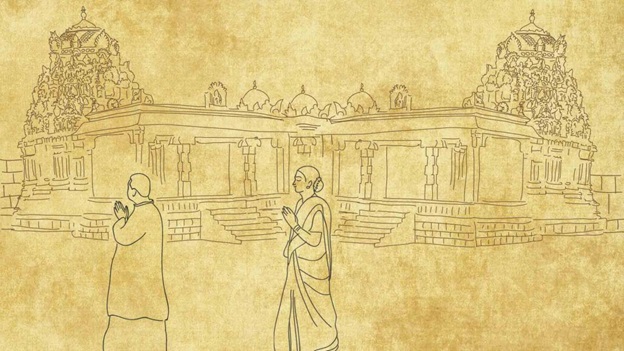
Sadhguru: Pradakshina means circumambulation. Circumambulation means going in a clockwise direction, particularly in the northern hemisphere. In the northern hemisphere of the planet, this is a natural phenomenon. If you notice closely, many natural phenomenon turn clockwise above the Equator and anticlockwise below it. It is not just with air or water, the very energy system functions like this. 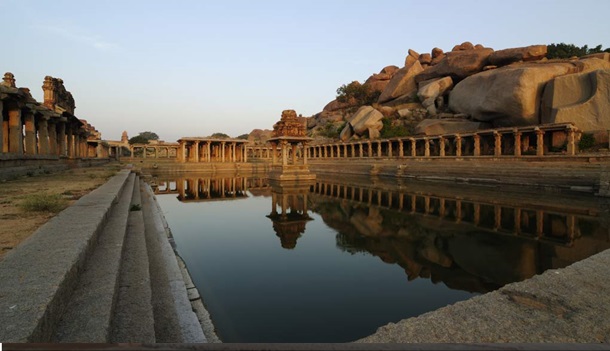
Sadhguru in Hampi, One of India’s Greatest Historic Cities
Part One & Part Two
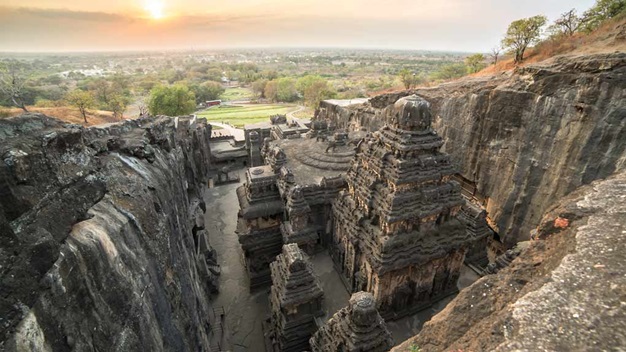

“Memory, Consciousness, and Comaâ€
LEELA Episodes "The Birth of Krishna" - A series by Sadhguru Krishna Stories: Exploring Krishna’s Path of the Playful
You may also access this article through our web-site http://www.lokvani.com/








